Adel N. Toosi
Benchmarking Deep Learning Models for Object Detection on Edge Computing Devices
Sep 25, 2024



Abstract:Modern applications, such as autonomous vehicles, require deploying deep learning algorithms on resource-constrained edge devices for real-time image and video processing. However, there is limited understanding of the efficiency and performance of various object detection models on these devices. In this paper, we evaluate state-of-the-art object detection models, including YOLOv8 (Nano, Small, Medium), EfficientDet Lite (Lite0, Lite1, Lite2), and SSD (SSD MobileNet V1, SSDLite MobileDet). We deployed these models on popular edge devices like the Raspberry Pi 3, 4, and 5 with/without TPU accelerators, and Jetson Orin Nano, collecting key performance metrics such as energy consumption, inference time, and Mean Average Precision (mAP). Our findings highlight that lower mAP models such as SSD MobileNet V1 are more energy-efficient and faster in inference, whereas higher mAP models like YOLOv8 Medium generally consume more energy and have slower inference, though with exceptions when accelerators like TPUs are used. Among the edge devices, Jetson Orin Nano stands out as the fastest and most energy-efficient option for request handling, despite having the highest idle energy consumption. These results emphasize the need to balance accuracy, speed, and energy efficiency when deploying deep learning models on edge devices, offering valuable guidance for practitioners and researchers selecting models and devices for their applications.
Motion-based video compression for resource-constrained camera traps
May 23, 2024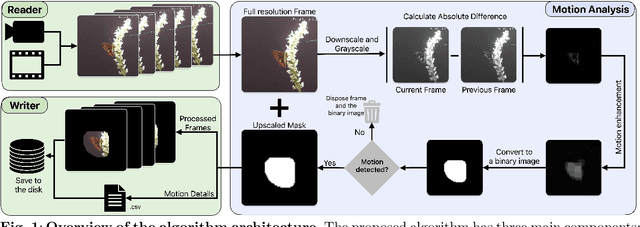
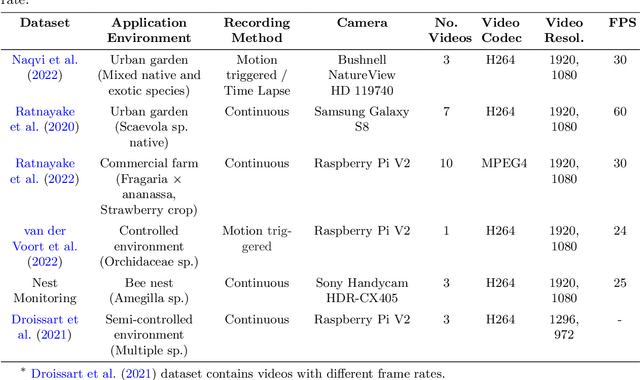
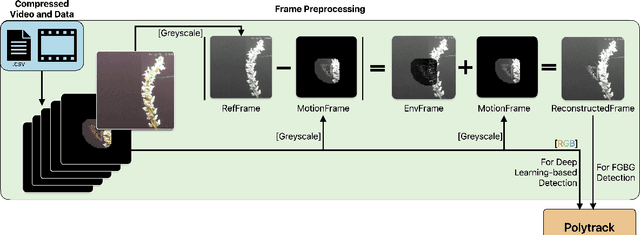
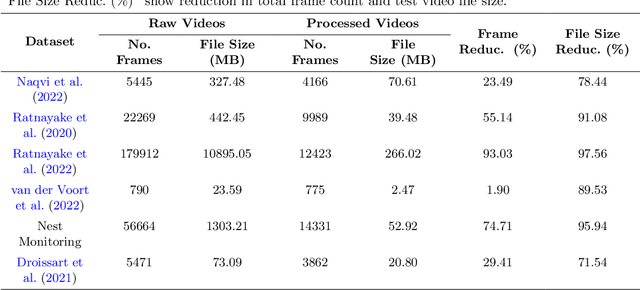
Abstract:Field-captured video allows for detailed studies of spatiotemporal aspects of animal locomotion, decision-making, and environmental interactions. However, despite the affordability of data capture with mass-produced hardware, storage, processing, and transmission overheads pose a significant hurdle to acquiring high-resolution video from field-deployed camera traps. Therefore, efficient compression algorithms are crucial for monitoring with camera traps that have limited access to power, storage, and bandwidth. In this article, we introduce a new motion analysis-based video compression algorithm designed to run on camera trap devices. We implemented and tested this algorithm using a case study of insect-pollinator motion tracking. The algorithm identifies and stores only image regions depicting motion relevant to pollination monitoring, reducing the overall data size by an average of 84% across a diverse set of test datasets while retaining the information necessary for relevant behavioural analysis. The methods outlined in this paper facilitate the broader application of computer vision-enabled, low-powered camera trap devices for remote, in-situ video-based animal motion monitoring.
Comparing Alternative Route Planning Techniques: A Web-based Demonstration and User Study
Jun 15, 2020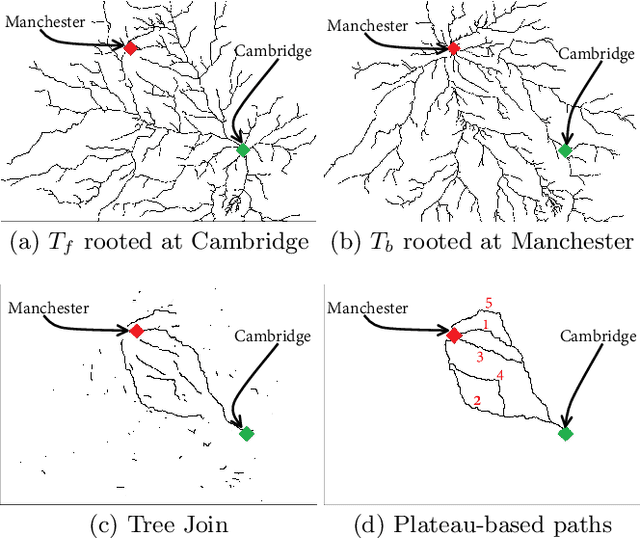



Abstract:Due to the popularity of smartphones, cheap wireless networks and availability of road network data, navigation applications have become a part of our everyday life. Many modern navigation systems and map-based services do not only provide the fastest route from a source location s to a target location t but also provide a few alternative routes to the users as more options to choose from. Consequently, computing alternative paths from a source s to a target t has received significant research attention in the past few years. However, it is not clear which of the existing approaches generates alternative paths of better quality because the quality of these alternatives is mostly subjective. Motivated by this, in this paper, we present the first user study that compares the quality of the alternative routes generated by four of the most popular existing approaches including the routes provided by Google Maps. We also present the details of a web-based demo system that can be accessed using any internet enabled device and allows users to see the alternative routes generated by the four approaches for any pair of source and target selected by the users. Our user study shows that although the mean rating received by Google Maps is slightly lower than the mean ratings received by the other three approaches, the results are not statistically significant. We also discuss the limitations of this user study and recommend the readers to interpret these results with caution because certain factors beyond our control may have affected the participants' ratings.
 Add to Chrome
Add to Chrome Add to Firefox
Add to Firefox Add to Edge
Add to Edge